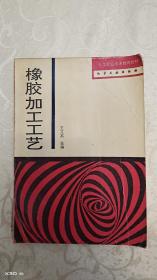
橡胶加工工艺
正版保障 假一赔十 可开发票
¥ 79.56 6.2折 ¥ 128 全新
库存27件
广东广州
认证卖家担保交易快速发货售后保障
作者王者辉,孙红主编
出版社化学工业出版社
ISBN9787122383655
出版时间2021-09
装帧平装
开本16开
定价128元
货号11234415
上书时间2024-08-31
- 最新上架
商品详情
- 品相描述:全新
- 商品描述
-
目录
Chapter 1 Polymer Chemistry:Elastomer Synthesis
1.1 Introduction
1.2 Classification of Polymerization Reactions and Kinetic Considerations
1.3 Polyaddition/ Polycondensation
1.4 Chain Polymerization by Free Radical Mechanism
1.5 Emulsion Polymerization
1.6 Copolymerization
1.7 Chain Polymerization by Cationic Mechanism
1.8 Chain Polymerization by Anionic Mechanism
1.9 Stereospecific Chain Polymerization and Copolymerization by Coordination Catalysts
1.10 Graft and Block Copolymerization
References
Chapter 2 Polymer Elasticity: Basic Concepts and Behavior
2.1 Introduction
2.2 Elasticity of a Single Molecule
2.3 Elasticity of a Three-Dimensional Network of Polymer Molecules
2.4 Comparison with Experiment
2.5 Continuum Theory of Rubber Elasticity
2.6 Second-Order Stresses
2.7 Elastic Behavior Under Small Deformations
2.8 Some Unsolved Problems in Rubber Elasticity
References
Chapter 3 Rubber Compounding
3.1 Introduction
3.2 Polymers
3.3 Filler Systems
3.4 Stabilizer Systems
3.5 Vulcanization System
3.6 Special Compounding Ingredients
3.7 Compound Development
3.8 Compound Preparation
3.9 Environmental Requirements in Compounding
3.10 Summary
References
Chapter 4 Reinforcement of Elastomers by Particulate Fillers
4.1 Introduction
4.2 Preparation of Fillers
4.3 Morphological and Physicochemical Characterization of Fillers
4.4 The Mix:a Nanocomposite of Elastomer and Filler
4.5 Mechanical Properties of Filled Rubbers
References
Chapter 5 Vulcanization
5.1 Introduction
5.2 Definition of Vulcanization
5.3 Effects of Vulcanization on Vulcanizate Properties
5.4 Characterization of the Vulcanization Process
5.5 Vulcanization by Sulfur without Accelerator
5.6 Accelerated-Sulfur Vulcanization
References
Chapter 6 Processing of Unvulcanized Elastomer
6.1 Introduction
6.2 Two Roll Mill
6.3 Internal Mixers
6.4 Continuous Mixers
6.5 Trouble Shooting the Mixing Process
6.6 Extrusion Process
6.7 Calendering
6.8 Continuous Vulcanization System
6.9 Moulding
References
Chapter 7 Rheological Behavior in Elastomer Processing
7.1 Introduction
7.2 Basic Concepts of Mechanics
7.3 Rheological Properties
7.4 Boundary Conditions
7.5 Mechanochemical Behavior
7.6 Rheological Measurements
7.7 Processing Technology
7.8 Engineering Analysis of Processing
References
Chapter 8 Thermoplastic Elastomers
8.1 Introduction
8.2 Synthesis of Thermoplastic Elastomers
8.3 Morphology of Thermoplastic Elastomers
8.4 Properties and Effect of Structure
8.5 Thermodynamics of Phase Separation
8.6 Thermoplastic Elastomers at Surfaces
8.7 Rheology and Processing
8.8 Applications
References
Chapter 9 Elastomer Blends
9.1 Introduction
9.2 Miscible Elastomer Blends
9.3 Immiscible Elastomer Blends
9.4 Conclusion
References
Chapter 10 Chemical Modification of Elastomers
10.1 Introduction
10.2 Chemical Modification of Polymers within Backbone and Chain Ends
10.3 Esterification,Etherification,and Hydrolysis of Polymers
10.4 The Hydrogenation of Polymers
10.5 Dehalogenation,Elimination,and Halogenation Reactions in Polymers
10.6 Other Addition Reactions to Double Bonds
10.7 Oxidation Reactions of Polymers
10.8 Functionalization of Polymers
10.9 Miscellaneous Chemical Reactions of Polymers
10.10 Block and Graft Copolymerization
References
Chapter 11 Strength of Elastomers
11.1 Introduction
11.2 Initiation of Fracture
11.3 Threshold Strengths and Extensibilities
11.4 Fracture Under Multiaxial Stresses
11.5 Crack Propagation
11.6 Tensile Rupture
11.7 Repeated Stressing:Mechanical Fatigue
11.8 Surface Cracking by Ozone
11.9 Abrasive Wear
References
Chapter 12 Tire Engineering
12.1 Introduction
12.2 Tire Types and Performance
12.3 Basic Tire Design
12.4 Tire Engineering
12.5 Tire Materials
12.6 Tire Testing
12.7 Tire Manufacturing
12.8 Summary
References
Chapter 13 Elastomer Recycling
13.1 Introduction
13.2 Retreading of Tire
13.3 Recycling of Rubber Vulcanizates
13.4 Use of Recycled Rubber
13.5 Pyrolysis and Incineration of Rubber
13.6 Concluding Remarks
References
Appendix Ⅰ Demonstration
Appendix Ⅱ Acronyms for Common Elastomers
精彩内容
《橡胶加工工艺(Elastomer Engineering)》主要内容包括:第1章“高分子化学:橡胶合成(Polymer Chemistry : Elastomer Synthesis)”;第2章“橡胶高弹性:基本原理与性质(Polymer Elasticity: Basic Concepts and Behavior)”;第3章“橡胶配合(Rubber Compounding)”;第4章“橡胶补强剂(Reinforcement of Elastomers by Particulate Fillers)”;第5章“橡胶硫化(Vulcanization)”;第6章“生胶加工工艺(Processing of Unvulcanized Elastomer)”;第7章“橡胶加工流变性(Rheological Behavior in Elastomer Processing)”;第8章“热塑性弹性体(Thermoplastic Elastomers)”;第9章“橡胶共混(Elastomer Blends)”;第10章“橡胶化学改性(Chemical Modification of Elastomers)”;第11章“橡胶强度(Strength of Elastomers)”;第12章“轮胎工艺(Tire Engineering)”;第13章“橡胶再生(Elastomer Recycling)”。本书内容全面,不仅综述性强,而且前沿性强,将橡胶加工新技术与新工艺呈现给读者。
《橡胶加工工艺(Elastomer Engineering)》可供高等学校橡胶工程技术、高分子材料工程技术专业,以及与高分子材料、橡胶工程专业相关的高分子材料与工程、复合材料、材料工程应用技术等本科专业作为教材,也可供橡胶企业工程技术人员和各类橡胶技术培训班学员等参考使用。
相关推荐
— 没有更多了 —


















以下为对购买帮助不大的评价